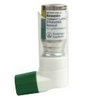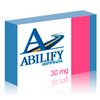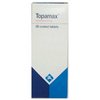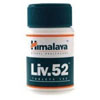INDICATIONS
Atrovent is indicated as a bronchodilator for maintenance treatment of bronchospasm associated with chronic obstructive pulmonary disease (COPD), including chronic bronchitis and emphysema.
INSTRUCTIONS
Atrovent is used to prevent bronchospasm attacks. Atrovent will not treat bronchospasm while it is happening. You may still have difficulty breathing and may need to use one of your other medicines to treat the attack. To best control your condition, use Atrovent regularly, and continue using all your other medicines as directed by your doctor.
Use this medication exactly as it was prescribed for you. Do not use it in larger doses or for longer than recommended by your doctor.
Call your doctor right away if you feel that this medicine is not working as well as usual, or if it makes your condition worse. If it seems like you need to use more of any of your medications in a 24-hour period, talk with your doctor.
This medication comes with patient instructions for safe and effective use. Follow these directions carefully. Ask your doctor or pharmacist if you have any questions.
When using the inhaler device for the first time, prime it by spraying 2 test sprays into the air, away from your face. Also prime the inhaler if you have not used it for 3 days or longer.
The instructions below are for standard use of the inhaler and nebulizer devices. Your doctor may want you to use your device differently. Be sure you understand all instructions that are specific to your use of Atrovent.
To use the inhaler:
- Uncap the mouthpiece of the inhaler. Breathe out fully. Put the mouthpiece into your mouth and close your lips. Keep your eyes closed to prevent spraying any medicine into your eyes. Breathe in slowly while pushing down on the canister. Hold your breath for 10 seconds, then breathe out slowly.
- If you use more than one inhalation at a time, wait at least 15 seconds before using the second inhalation.
- Keep your inhaler clean and dry, and store it with the cap on the mouthpiece. Clean your inhaler once a week by removing the canister and placing the mouthpiece under warm running water for at least 30 seconds. Allow the parts to dry before putting the inhaler back together.
To use the solution with a nebulizer:
- Measure the correct amount of medicine using the dropper provided, or use the proper number of ampules. Place the liquid into the medication chamber of the nebulizer. If using a medicine dropper, do not allow the dropper to touch any surface including your hands or the nebulizer.
- Attach the mouthpiece or face mask to the drug chamber. Then, attach the drug chamber to the compressor. Sit upright in a comfortable position. Place the mouthpiece into your mouth or put the face mask on, covering your nose and mouth. Breathe in slowly and evenly until you have inhaled all of the medicine (usually 5 to 15 minutes). The treatment is complete when no more mist is formed by the nebulizer and the drug chamber is empty.
- Clean the nebulizer after each use. Follow the cleaning directions that came with your nebulizer.
Call your doctor right away if you feel that this medicine is not working as well as usual, or if it makes your condition worse. If it seems like you need to use more of any of your medications in a 24-hour period, talk with your doctor.
To be sure this medication is helping your condition, your lung function will need to be tested on a regular basis. It is important that you not miss any scheduled visits to your doctor.
Use the medication as soon as you remember. If it is almost time for the next dose, skip the missed dose and wait until your next regularly scheduled dose. Do not use extra medicine to make up the missed dose.
DOSAGE
The usual starting dose of ATROVENT HFA is two inhalations four times a day. Patients may take additional inhalations as required; however, the total number of inhalations should not exceed 12 in 24 hours.
ATROVENT HFA is a solution aerosol that does not require shaking. However, as with any other metered-dose inhaler, some coordination is required between actuating the canister and inhaling the medication.
Patients should “prime” or actuate ATROVENT HFA before using for the first time by releasing 2 test sprays into the air away from the face. In cases where the inhaler has not been used for more than 3 days, prime the inhaler again by releasing 2 test sprays into the air away from the face. Patients should avoid spraying ATROVENT HFA into their eyes.
Each inhaler provides sufficient medication for 200 actuations. The inhaler should be discarded after the labeled number of actuations has been used. The amount of medication in each actuation cannot be assured after this point, even though the canister is not completely empty.
STORAGE
Store Atrovent at room temperature away from moisture and heat. Extreme heat can cause the canister to burst. Do not store it in your car on hot days. Do not throw an empty canister into open flame.
Keep track of the number of sprays you have used and throw away the inhaler canister after 200 sprays, even if it feels like there is still medicine in it.







